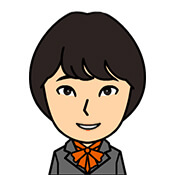
Do you have a routine that you always follow when you do something?
Or do you have your own rules, such as “I always do this when I do something like this”?
This time, we would like to introduce you to a grammar that you can use to express your own rules.
‘when’ or ‘timing’.
Indicates “when” or “timing” for something to happen.
The -ㄹ 때 indicates the time or timing when things happen.
It’s mean to ‘when’ or ‘timing’.
Av
가다 + 때 = 갈 때
when going to ~.
Dv
덥다 + 때 = 더울 때
when it is hot.
Together with “ㄹ 때” we will express what is happening or doing.
How to use “-ㄹ 때”.
-ㄹ 때 is combined with verb and adjective stems.
Vst + -(으)ㄹ 때
보다 + -ㄹ 때 = 볼 때
이다 + -ㄹ 때 = 일 때
바쁘다 + -ㄹ 때 = 바쁠 때
웃다 + -ㄹ 때 = 웃을 때
있다 + -ㄹ 때 = 있을 때
귀찮다 + -ㄹ 때 = 귀찮을 때
만들다 + -ㄹ 때 = 만들 때
들다 + -ㄹ 때 = 들을 때
덥다 + -ㄹ 때 = 더울 때
그렇다 + -ㄹ 때 = 그럴 때
※Vst = stem of verbs or adjectives.
No patchum in the stem

When you go to the hospital, make an appointment first.
(가다)

Grandma uses reading glasses when looking at the newspaper.
(보다)

I won the district tournament when I was in high school.
(고등학생+이다)
Words without a patchum in the stem are combined with -ㄹ 때.
Have a patchum in the stem

He’s cute and affectionate when he smiles.
(웃다)

I read books when I have time.
(있다)

I boil a ramen noodles, when preparing meals is a hassle.
(귀찮다)
If the word stem has a patchum, add -을 때.
Cases of irregular changes.
ㄹpatchum

You definitely need sesame oil when making kimbap.
(만들다)
When the stem is ㄹ-patchum, 때 is added as is.
Part of ㄷpatchum

I always feel sleepy when I listen to that professor’s lectures.
(듣다)
When the stem ㄷ patchm becomes ㄹ, use -을 때.
Part of ㅂpatchum

People blush when they are embarrassed.
(부끄럽다)
The ㅂ patchum will be 우, so add -ㄹ 때 to it.
ㅎpatchum

In that case, ask your friends.
(그렇다)
The ㅎpatchum drops out and the -ㄹ 때 enters there.
Let’s change the wording a bit and apply it.
Use “-았/었” together if you are talking about the past.
When talking about the past, combine -았/었.

We first met 10 years ago.

I was incredibly nervous when I got the interview.

I wasn’t tall when I was in middle school.
The sentence pattern is like “-았을 때/었을 때”.
Combinations with nouns can omit sentence patterns.
We use 이다 for nouns, so they become -일 때 or -이었을 때, but this can be omitted.

What should I do when school is not in session?

I lived in Singapore when I was 7 years old.

Take this medicine morning and evening.
The nuance does not change even if the phrase is “noun + 때”, so when it can be omitted, it’s better to expressed in short form.
When combined with other grammars.
-ㄹ 때 can be combined with other grammar.

It always rains when I try to go out.

When I want to eat samgyeopsal, I go to Halmoni Restaurant.

I’d like to see it when it’s not so crowded.
When combined with other grammars like this, the range of expression is expanded.
Let’s start expressing your own personal routines, etc.